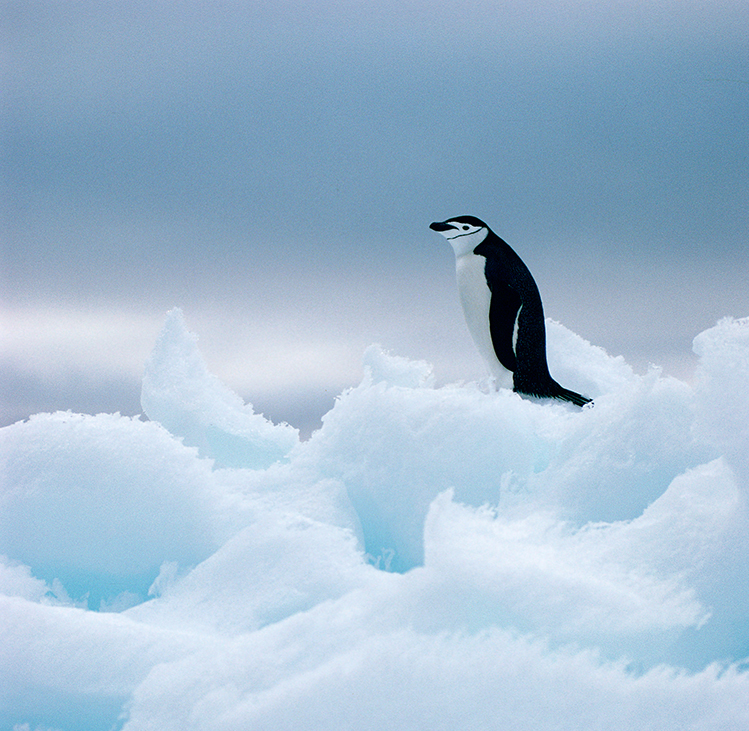Zooming In On Doug Hilborn, Photo Guide
Doug Hilborn grew up in Fargo, North Dakota and became interested in photography in the 9th grade when he took a photo arts class. Travels to the American West with his family, church groups, and Boy Scouts further stimulated his interest in nature photography.
After earning a degree in photography in Spokane, WA, Doug moved to Seattle where he freelanced for commercial photographers and worked at a professional photo lab. He then spent four seasons working in Antarctica. In 1989 he moved to Yellowstone National Park. His first nine years in the park he worked in various jobs (server, snowmobile rentals, and security guard). Doug was then offered the golden opportunity to use his skills to lead the first photo tour in the park. He’s proud to have shared the Photo Safari Guide title with Lisa Culpepper for several years.
Doug uses photography to share with others those special moments in time when the lighting is extra special or a moose walks out into the most idyllic setting or, better yet, when both occur at the same time! Doug shares, “The sense of wonder I experience while photographing leaves me feeling renewed.”
He also photographs in hopes of inspiring those who view his images to become advocates for wildlands. Doug reminds us that Yellowstone was set aside in 1872 thanks in part to pioneer photographer William Henry Jackson whose photos were shown to Congress. Whether it is a national park or forest, your own county park, or Antarctica, these places need people to defend them. He hopes people are inspired by his work to advocate to protect our public lands.
Doug’s “Lone Penguin On Ice” image below was shot near Palmer Station, Antarctica, and contained no digital trickery as many people think it does (note: the bottom was cropped a bit for this web post). Ice was pushed up onto the shore of a tiny island, and there was this beautiful Chinstrap Penguin just begging to be photographed (which was easy to do as wildlife guidelines for Antarctica in the 1990s stated that you must maintain a distance of 17 feet from wildlife). A motorized Zodiac raft was used to arrive at the island. Doug shares, “The Lone Penguin On Ice had such a floating on clouds surreal look to it that it is unlike any other photo I’ve ever taken”.

The Q&A
How do you recommend getting a photography hobby started?
These days, it’s a lot easier to learn about all aspects of photography because of the internet, which wasn’t available when I started out. There are many YouTube videos out there to take advantage of from photographic composition, to how to use the features on your particular camera. Taking a high school, college, or continuing adult education class could be very beneficial. One could also learn a lot the old-fashioned way, by buying a “how-to-book” by a reputable photographer. Studying the photographic compositions of better-known photographers is always beneficial.
Can you share one best practice of any photographer?
DO NO HARM! Respect whatever it is you’re photographing. Whether it is a flower or a grizzly bear, have high standards. Especially in YNP, animals are constantly pressured by people for that ultimate wildlife photo. Make sure not to disrupt the animal’s behavior by honking, shouting, whistling, or getting too close, etc.
The essential pro-tip?
For better wildlife shots, wait for that animal to lift its head. Head-down shots are a dime a dozen and not as interesting. Look for the catchlight in the animal’s eye. A catchlight is a specular highlight caused by the sun/clouds reflecting off of the eyeball. You will see this a lot in closeups in wildlife magazines and calendars. Get out early when shyer animals might be closer to the roads.
Any thoughts on cameras vs. iPhones – pros/cons?
Smartphones are great for things like landscapes and flower shots. If you’re not going to be making big prints for the living room wall, a smartphone may be the answer for you. Generally speaking (without getting into physics), the smaller sensor of the smartphones gets most things in focus from near to far. The larger sensors of traditional cameras have a tougher time of this. Smartphones currently can’t do great telephoto shots of wildlife. If that is what you want to get into, you will need to move beyond your smartphone. Smartphones also can’t produce intentional out-of-focus backgrounds nearly as well as larger sensor cameras can. Often you want to have those jumbled dead trees in the background of your animal shots to be a blur, and the larger sensors can accomplish that. Another thing that is a little harder to duplicate on smartphones, but easy on larger sensor cameras, is that shot of Old Faithful going off with the sun creating a starlike effect. It can be done, and there are apps for after the fact, but from what I’ve seen, they don’t compare favorably.
What are your favorite things to photograph?
Wide-angle landscapes in the soft light of morning and evening. Environmental wildlife portraits.
Favorite photographer?
Ansel Adams sounds so cliché, but he was amazing. Two others of exceptional note are Carr Clifton and David Muench.
Doug will be back this year guiding the early morning Photo Safari tours that leave from Lake Hotel. His tour was suspended for 2020 due to COVID-19 and space will be very limited this summer! If you feel like treating yourself to a seat on his tour this year, you’ll need to try and book far in advance (or put it on your bucket list for 2022)!